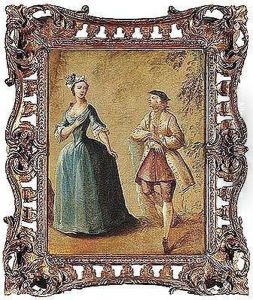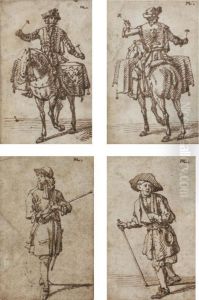Marcellus, Laroon Sr. Paintings
Marcellus Laroon the Elder, also known as Marcellus Lauron or Marcellus the Dutchman, was a notable Dutch painter and engraver who spent a significant part of his career in England. Born in The Hague in 1653, Laroon came from an artistic family; his father was also a painter. He likely received his initial artistic training from his father before moving to England around 1674, in search of new opportunities.
Laroon quickly became known for his skill as a portraitist and for his genre scenes depicting everyday life. He was particularly adept at capturing the nuances of social interactions and the fashions of the time. His work provides valuable insight into the society and culture of late 17th-century England.
Throughout his career in England, he was associated with the London art scene and was known to have worked with other artists and engravers. Laroon's paintings often featured lively scenes of markets, fairs, and street life, which were popular among the middle-class clientele. These works were sometimes reproduced as prints, which helped to spread his reputation beyond those who could afford his original paintings.
Laroon's influence continued through his son, Marcellus Laroon the Younger, who also became a well-known artist in his own right. Marcellus the Elder's legacy is particularly tied to his series of drawings titled 'The Cryes of London,' which were engraved and published after his death. These images document the street vendors of London, providing a window into the urban life of the period.
Marcellus Laroon the Elder died in London in 1702. His work is represented in various collections and museums, and he is remembered for his contributions to the genre of social realism and portraiture in the late 17th century. Despite not being as widely known as some of his contemporaries, Laroon's art remains an important record of the time in which he lived and worked.

